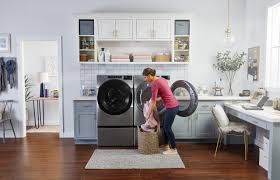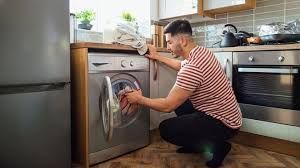Troubleshooting a Whirlpool Refrigerator That Isn't Cooling
The heartbeat of any functional kitchen, a reliable refrigerator, serves as the guardian of freshness, safeguarding perishables and maintaining the integrity of food items. The pivotal role of a well-operating refrigerator cannot be overstated, as it underpins not only the convenience of storing food but also the crucial aspect of preserving its quality and safety. However, when a Whirlpool refrigerator falters in its cooling function, the repercussions reverberate throughout the household.
This malfunction disrupts the delicate balance of food preservation, causing inconvenience, compromising stored items, and potentially risking foodborne illnesses. The inconvenience of a refrigerator not cooling properly transcends mere annoyance; it underscores the urgent need for troubleshooting measures to restore its optimal functioning. Understanding how to diagnose and rectify cooling issues in a Whirlpool refrigerator becomes imperative, ensuring the preservation of food quality, household convenience, and a smooth-running kitchen environment.
Understanding Refrigerator Cooling Issues
Signs of a Refrigerator Not Cooling:
When a refrigerator isn't cooling adequately, several telltale signs emerge, indicating underlying issues:
- The interior of the refrigerator feels warmer than usual, failing to maintain the set temperature.
- Perishable items, especially those prone to spoilage, show signs of decay or spoilage quicker than expected.
- The appliance might produce irregular sounds like excessive humming, buzzing, or clicking, indicating potential issues with the cooling system.
Potential Causes of Cooling Problems:
Several common culprits can lead to
cooling problems in a refrigerator:
- A malfunctioning thermostat might fail to regulate the refrigerator's temperature properly, leading to inconsistent cooling.
- The compressor, responsible for circulating refrigerant and maintaining cool temperatures, can encounter issues such as failure, inefficiency, or overheating.
- Obstructions in the airflow path, caused by improper positioning of items or debris, can disrupt the cooling process by impeding proper circulation of cold air.
Understanding these signs and potential causes forms the initial step in diagnosing and addressing refrigerator cooling issues, enabling homeowners to take appropriate troubleshooting measures to restore optimal cooling functionality.
Troubleshooting Steps
Let's explore the troubleshooting steps for a refrigerator not cooling properly:
Temperature Checks:
To verify refrigerator temperature settings and identify inconsistencies:
- Use a thermometer to measure the refrigerator's interior temperature against the set temperature.
- Adjust settings if there's a noticeable variance and wait for a few hours to reassess consistency.
Cleaning Condenser Coils:
To enhance cooling efficiency by cleaning condenser coils:
- Locate the coils typically at the rear or base of the refrigerator.
- Disconnect power and gently vacuum or brush the coils to remove dust and debris buildup.
Checking Door Seals:
To ensure tight door seals and
detect leaks:
- Examine the door gaskets for any signs of wear, tears, or gaps.
- Test the seals by placing a dollar bill in the closed door; if it's easy to pull out, the seal may need replacement.
Assessing Air Vents and Fans:
To maintain proper airflow by inspecting and cleaning vents and fans:
- Locate air vents and fans within the refrigerator compartments.
- Clean accumulated dust or debris using a soft brush or cloth to ensure unobstructed airflow.
Verifying Power Supply:
To confirm the refrigerator has adequate power supply and is properly plugged in:
- Ensure the power cord is securely plugged into a functioning power outlet.
- Check the circuit breaker or fuses to confirm the refrigerator is receiving power.
Implementing these troubleshooting steps systematically can often resolve common cooling issues in refrigerators, enhancing their functionality and restoring optimal cooling performance.
Specific Issues and Solutions
Let's address specific refrigerator issues and their potential solutions:
Thermostat Malfunction:
Check the temperature settings and monitor temperature consistency after adjusting. Use a separate thermometer to verify actual temperature against the set temperature. If the temperature remains inconsistent, consider recalibrating or replacing the thermostat, following manufacturer instructions or seeking professional help.
Defective Compressor:
Listen for irregular noises like clicking or constant humming, or feel the compressor for excessive heat. Unplug the refrigerator and ensure proper ventilation around the compressor. Contact a professional repair service for inspection and potential repair or replacement of the compressor if deemed defective.
Refrigerant Leaks:
Look for oily residue or discoloration around refrigerant lines, coils, or connections. Use a leak detection kit for pinpointing leaks if available. If a leak is identified, it's essential to contact a professional repair service immediately, such as Authorized Appliance, for refrigerant leak detection, repair, and recharging as refrigerants are hazardous and require specialized handling.
Addressing these specific issues involves careful observation, troubleshooting, and often necessitates the expertise of certified professionals to ensure effective resolution and restore the refrigerator's optimal cooling function.
Seeking Professional Help
Certain indications suggest that DIY troubleshooting might not suffice for refrigerator issues. If after thorough troubleshooting, including checking components, cleaning, and adjusting settings, the problem persists or worsens, it's advisable to seek professional assistance. Additionally, if dealing with complex issues like compressor or refrigerant problems, or when safety concerns arise due to electrical or gas-related issues, it's crucial to enlist the expertise of a professional repair service.
Reputable repair services like
Authorized Appliance offer expert assistance for refrigerator repairs. Authorized Appliance is a recognized repair service known for its expertise in diagnosing and resolving appliance issues, including refrigerator malfunctions. Their certified technicians provide reliable and efficient repair solutions, ensuring the restoration of optimal functionality to refrigerators and various other household appliances. Seeking services from Authorized Appliance ensures trustworthy and specialized assistance for resolving refrigerator problems and maintaining household appliances in top condition.
Maintenance Tips for Long-Term Performance
Maintaining a Whirlpool refrigerator for long-term performance involves adhering to a consistent maintenance routine. Regularly cleaning condenser coils, inspecting door seals, clearing the drainage system, and monitoring temperature settings are pivotal steps in preventing future cooling problems. Additionally, optimizing usage practices is key: organizing contents for better airflow, allowing sufficient space for ventilation, avoiding overfilling, and periodically defrosting manual-defrost refrigerators all contribute significantly to maintaining cooling efficiency. These maintenance practices, coupled with usage tips, ensure the refrigerator's longevity, reduce the risk of cooling issues, and bolster its efficiency in preserving food freshness.
By integrating these maintenance strategies into regular household routines, homeowners can secure their Whirlpool refrigerator's optimal performance. Consistency in maintenance not only safeguards against potential cooling disruptions but also sustains the appliance's efficiency, ensuring a trouble-free experience in the kitchen and prolonging the refrigerator's functionality for years to come.
Conclusion
The diligence of troubleshooting issues and consistently maintaining a Whirlpool refrigerator plays a pivotal role in guaranteeing its proper cooling function, ensuring a hassle-free and efficient kitchen experience. By addressing problems promptly and adhering to regular maintenance, homeowners not only preserve the appliance's functionality but also safeguard the quality of stored food, contributing to a seamless and trouble-free kitchen environment.




